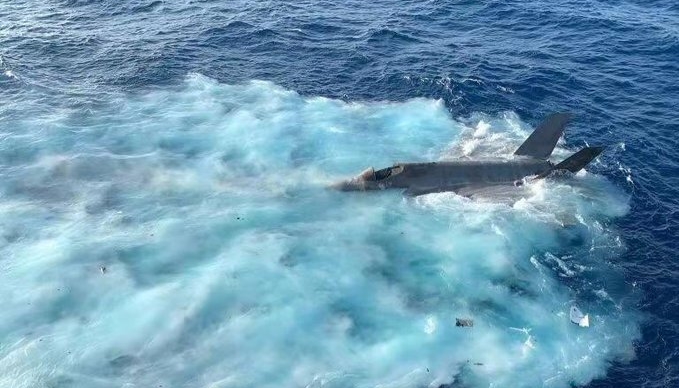Images of a US Navy F-35C stealth jet falling into the South China Sea earlier this week have surfaced.
The F-35C, a single-engine stealth fighter and the newest jet in the US Navy fleet, crashed-landed on Monday during regular operations aboard the aircraft carrier USS Carl Vinson.
According to Navy officials, the $100 million warplane collided with the flight deck of the 100,000-ton aircraft carrier before plummeting into the ocean as its pilot ejected. The Vinson’s pilot and six sailors were hurt.
According to the US Navy’s 7th Fleet, an investigation into the event is ongoing, and photographs that surfaced on social media after the collision are legit.
“The ship has assessed that the video and photo covered by media today were taken on board USS Carl Vinson during the crash,” Cmdr. Hayley Sims, public affairs officer for the 7th Fleet, said.
An image of the stealth fighter floating on the surface of the South China Sea shows the cockpit open and the ejection seat gone.
The Navy announced earlier this week that the Vinson sustained relatively minor damage, and the carrier’s air wing had resumed normal operations. According to Lt. Nicholas Lingo, 7th Fleet official, an endeavour to retrieve the fighter jet from the bottom of the South China Sea has commenced.
Analysts believe that raising the plane would be a demanding operation that China would constantly monitor, which claims the entire 1.3 million-square-mile South China Sea.
The F-35C features some of the Navy’s most sophisticated equipment, and observers believe Washington would like to keep it out of the hands of Beijing.
On Thursday, the Chinese Foreign Ministry stated that they were aware that a US Navy stealth fighter had fallen in the South China Sea but that they “had no interests in their plane.”
“We advise [the US] to contribute more to regional peace and stability, rather than flexing force at every turn in [the South China Sea],” China’s Foreign Ministry spokesperson Zhao Lijian said.

